FX pedals play a pivotal role in shaping the unique soundscapes of jazz music. As a jazz guitarist, you’re not just a musician; you’re a sonic alchemist, blending tones and textures to create aural gold. Guitar pedals for jazz players can greatly influence their sound, allowing them to experiment with everything from subtle coloration to bold, striking effects. Whether looking to add a warm overdrive, a lush reverb, or an expressive wah-wah, the right pedal can elevate your playing and bring new dimensions to jazz’s complex harmonic structures.
Understanding the synergy between your guitar and pedals is crucial for articulating your musical vision. Jazz is an expansive genre that values improvisation and expression, and pedals can help in carving out your personal sound within this tradition. While purists might advocate for a clean, unaltered tone, modern jazz guitarists often incorporate effects pedals as a means to expand their sonic palette. This includes utilizing reverbs for atmospheric depth, delays for rhythmic complexity, or modulations like phaser and chorus to add movement to their harmonic explorations.
When considering guitar pedals for jazz, focus on those that enhance your tone without overwhelming the nuances of your playing. A well-selected pedal setup can complement your guitar’s natural voice and the dynamic interplay within a jazz ensemble. Remember, the objective is to use pedals to express your creativity and contribute to the rich tapestry of jazz music, all while maintaining the genre’s sophisticated and emotive core.
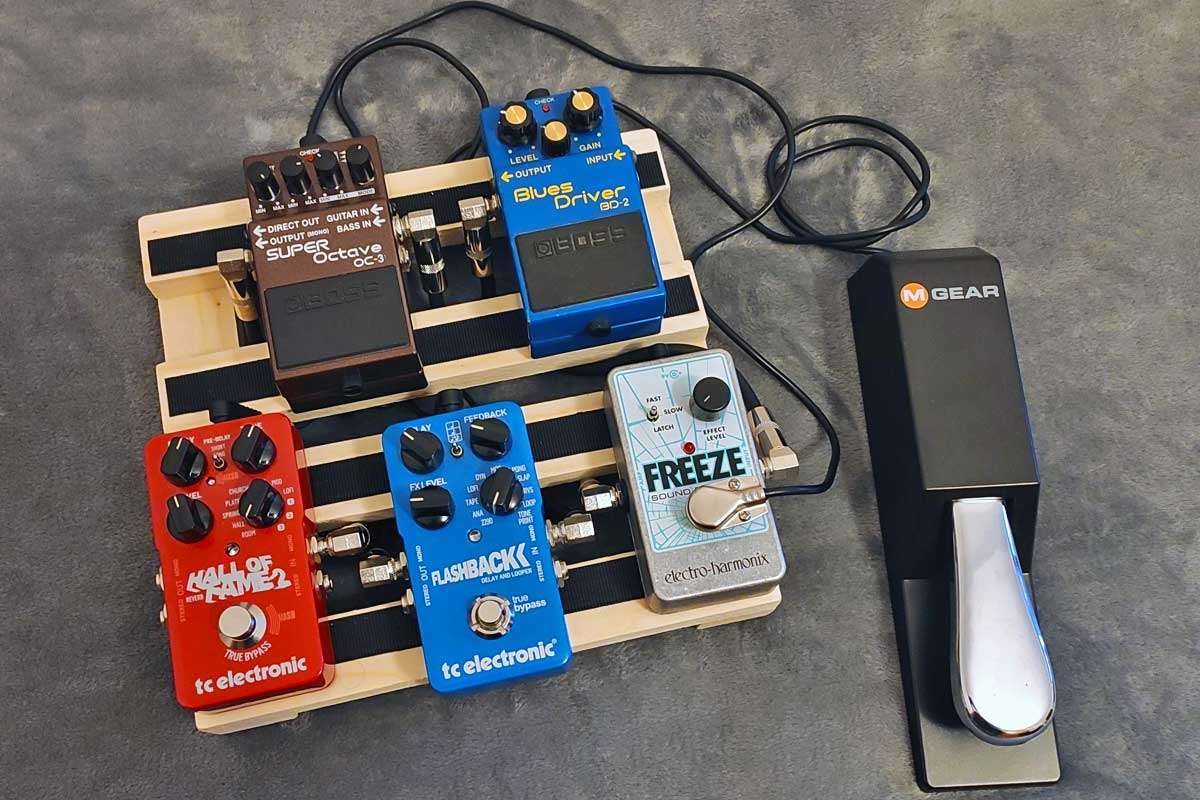
History of Jazz Guitar Tone
When exploring the realm of jazz guitar, the tonal evolution is a journey from acoustic depths to electric heights, a spectrum enriched by technological advancements and the personal touch of industry titans.
Related: The History of Guitar FX Pedals
Evolution of Jazz Guitar Sound
Initially, jazz guitar existed purely in the acoustic domain, with its resonance and warmth laying the foundation for what was to come. As music progressed, the electric guitar entered the scene, bringing with it a new palette of tonal possibilities. The emergence of electric jazz guitar played a pivotal role in shaping the modern jazz sound. This sound was further refined as the use of guitar pedals became prevalent among jazz guitarists, adding layers of texture and color to their music.
Guitar pedals for jazz range from subtle reverb for added depth, to chorus effects that create a shimmering, dimensional character. Notable is the use of delay and loop pedals, providing a means to extend the sonic fabric of live performances. Jazz guitarists select their pedals thoughtfully, aiming to complement the genre’s sophisticated nature rather than overwhelm it.
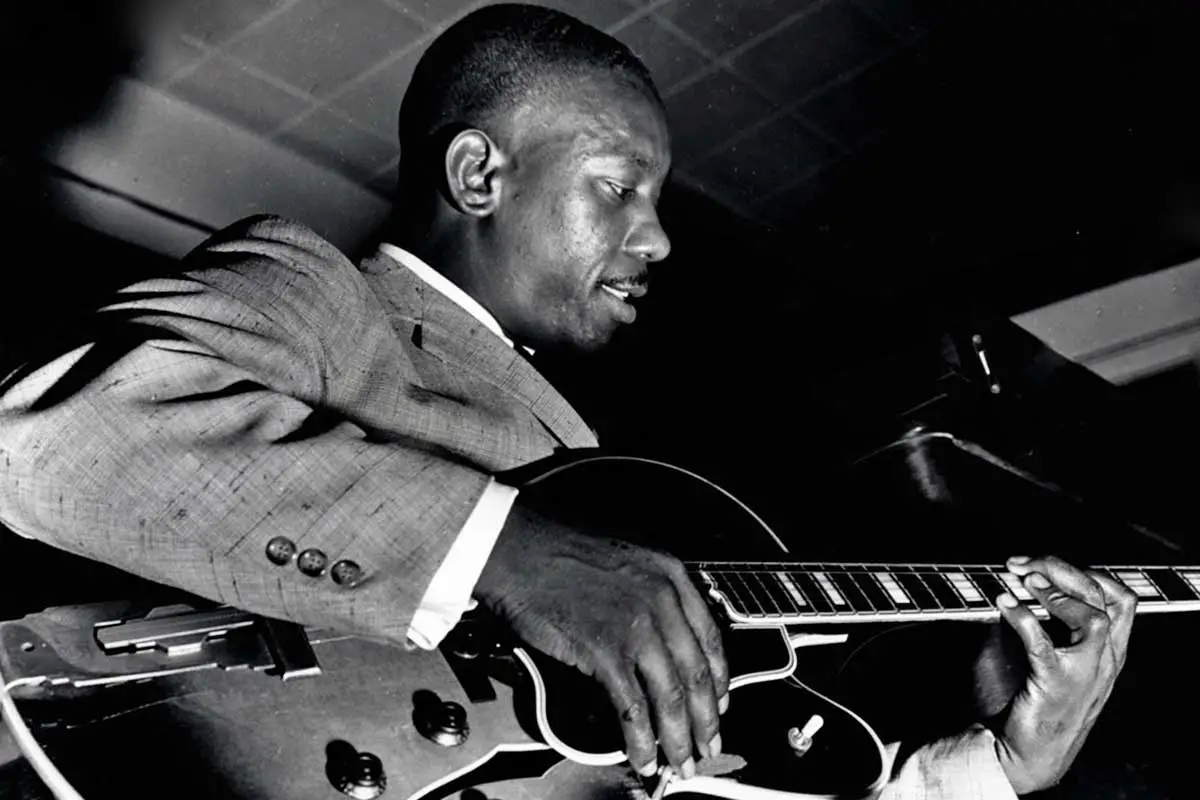
Influence of Legendary Jazz Guitarists
Your appreciation for jazz guitar tone deepens as you consider the impact of legendary figures. Wes Montgomery, renowned for his octave playing and dynamic expressiveness, never relied on pedals, yet his tone has become a standard in jazz guitar timbre. Pat Metheny and John Scofield have both embraced guitar effects, Metheny with his ethereal soundscapes and Scofield with his distinct fusion of funk and rock elements into jazz.
Kurt Rosenwinkel and Gilad Hekselman represent the modern vanguard, continuously pushing the boundaries of jazz guitar tone. Rosenwinkel often incorporates a subtle blend of digital delay and reverb, adding a celestial quality to his playing. Hekselman leverages the clarity of his guitar’s natural sound, demonstrating the nuanced use of effects in modern jazz.
While not a traditional jazz artist, Jimi Hendrix’s inventive use of guitar effects pedals influenced many musicians, including jazz guitarists, to experiment with their sound. His legacy signifies the exploration of electric guitar’s expressive potential. Jazz guitarists took note of Hendrix’s radical techniques and forged new pathways in their genre by integrating modified versions of his tonal explorations.
Choosing Pedals for Jazz Guitar
In jazz guitar, achieving a signature tone is as essential as the notes you play. The pedals you select can significantly enhance your sound, bringing out the warmth and clarity that jazz requires.
Fundamentals of Jazz Guitar Tone
Jazz guitar tone is characterized by its warm, mellow quality, often with a focus on clean tone. To maintain this foundational sound, it’s crucial to start with a competent guitar and amplifier set that responds well to dynamic playing. When integrating guitar effects pedals, subtlety is key – the goal is to enhance, not overpower.
- Compression Pedals: For balanced dynamics, consider using a compression pedal to even out your playing and sustain notes without drastic volume changes.
- Reverb Pedal: A touch of reverb adds depth and dimension to your sound. Opt for a reverb pedal that provides a rich, yet understated ambiance.
Pedals for Clean Tone Enhancement
The clean tone in jazz guitar is the bedrock upon which your sound is built, so improving this aspect is essential. A few pedals can elevate your clean tone:
- EQ Pedals: Use an EQ pedal to fine-tune your frequencies and bring forward the rich mid-tones inherent to jazz guitar.
- Overdrive Pedal: A light overdrive pedal can be dialed back for just a hint of break-up, offering a slightly edgier sound that still respects the genre’s clean tone imperative.
Remember, your pedals should complement your technique and the natural voice of your guitar, creating a sound that’s uniquely yours within the jazz genre.
Essential Jazz Guitar Pedals
When crafting your jazz guitar tone, the judicious use of pedals can greatly enhance your sound. Pedals like compression and reverb provide subtle nuance, while overdrive and modulation effects can add texture and depth to your playing.
Related: A Comprehensive Guide On All The Pedal Types
Compression Pedals
Compression is indispensable in jazz guitar playing, offering a balanced sound and consistent dynamic range. You’ll experience an even tone across all strings and nuances in your playing will become more pronounced. Opt for a compressor with a blend control, allowing you to maintain dynamics without losing the natural character of your guitar.
Reverb and Delay Pedals
The reverb pedal is your go-to for emulating the atmospheric ambiance of a live jazz club, whilst a delay pedal can add a dimensional feel to your solos. Choose a reverb with adjustable decay settings to match different room sizes and a delay that offers a warm, analog echo for the best fusion of old-school vibe with modern clarity.
Overdrive and Distortion Pedals
For those times you need a touch of grit, an overdrive or distortion pedal can add a slight edge or a powerful boost without overpowering your jazz sound. Look for pedals that offer a wide range of gain settings to control the intensity of your overdrive or distortion, making your transitions from clean to dirty seamlessly elegant.
Modulation Effects Pedals
Chorus, phaser, and an octave pedal introduce a lush, fluid texture and enhance chordal work. A chorus pedal with adjustable rate and depth can provide the shimmer or warmth to your chords and melody lines. A phaser offers a swirling effect that works well for slower passages or rhythmic comping. An octave pedal can add a new dimension to your playing, be it subtle thickening or a pronounced doubling effect.
Pedal Recommendations
If you’re looking to buy a pedal in any of these categories for your jazz playing, check out the links below. We have some buying guides that include our top picks and offer various price points, some pedals having superb ratings & as low as $20.
The Best: Compression Pedals – Reverb Pedals – Delay Pedals – Overdrive Pedals – Distortion Pedals – Chorus Pedals – Phaser Pedals – Octave Pedals – Pedalboards
Advanced Jazz Pedal Techniques
In jazz guitar, exploiting the full potential of pedals can deepen your expressive capabilities and expand the textures available to you. Advanced techniques with pedals such as volume and expression, as well as looper and ambient effects, can create compelling soundscapes intrinsic to modern jazz guitar performance.
Using Volume and Expression Pedals
To master dynamic control in your jazz playing, integrate a volume pedal to swell in chords or notes, creating a sense of crescendo or decrescendo that can mirror the breathing quality of wind instruments commonly found in jazz. Beyond merely adjusting volume, an expression pedal allows you to manipulate other effect parameters in real time, adding layers of complexity and nuance to your sound without interrupting your playing.
- Volume Swells: Use the volume pedal to smoothly bring in a note or chord, simulating a horn-like attack.
- Real-time Control: Assign an expression pedal to control effects like reverb or delay depth for dynamic shifts within a piece.
Looper and Ambient Pedals
Embrace the looper pedal to craft intricate layers or to practice over chord progressions, essentially becoming your own accompanist. When it comes to creating an atmospheric texture, pairing a looper with ambient effects like reverb and delay can result in lush backdrops over which sophisticated solos can be played. Experimenting with feedback manipulation through a looper can also yield unpredictable and engaging sonic results that push the boundaries of traditional jazz guitar.
- Layering: Build up complex textures by layering multiple loops with different harmonic or rhythmic content.
- Ambient Soundscapes: Use reverb and delay pedals with a looper to create expansive and ethereal backgrounds to support your improvisation.
Pedal Setup and Signal Chain
In jazz, your guitar tone is paramount, and the order of your pedals can drastically affect your sound. Understanding the signal chain and how different pedals interact is crucial for crafting your unique voice.
Signal Chain Basics
Your signal chain is the path your guitar’s signal takes from the moment it leaves your instrument until it reaches the amplifier. Typically, this starts with gain-based effects like overdrive or fuzz, which shape the core tone of your guitar. Including a fuzz pedal early in the chain can give you a warm, saturated sound without losing clarity.
Next in line are modulation effects such as chorus or wah pedals. For jazz specifically, a subtle wah can add a touch of expressiveness, and a light chorus might be used to thicken the sound. These typically come before time-based effects like delay or reverb, which should be placed at the end of the chain to ensure a clean, distinct echo or atmospheric effect.
Effects order example:
- Gain-based effects (Fuzz, Overdrive)
- Filter-based effects (Wah)
- Modulation-based effects (Chorus)
- Time-based effects (Delay, Reverb)
The Impact of Pedal Order on Tone
The placement of pedals in your signal chain can dramatically alter your tone. For example, putting a wah pedal before a fuzz pedal yields a sharper wah effect, as the wah shapes the guitar’s raw signal which is then amplified by the fuzz. Conversely, placing the wah after the fuzz results in a more subtle effect.
Similarly, the dynamic response of your guitar would change if a compressor is placed before or after a gain pedal. Before the gain pedal, the compressor evens out your dynamics, leading to more uniform distortion. After the gain pedal, it emphasizes the characteristics of the gain effect, potentially leading to a more nuanced expression.
Remember, there are no absolute rules to ordering your pedals. Each jazz guitarist’s signal chain is personal and should be tailored to their sound and style preference. Experimentation is key in finding what works best for your musical voice.
Pedal Choices for Jazz Guitarists
When exploring the realm of jazz guitar, your sound can be heavily shaped by the pedals you choose. From subtle enhancements to bold soundscapes, the proper pedals can elevate your performance in jazz’s diverse genres.
Profiles of Professional Jazz Guitarist Setups
As a jazz guitarist, you should pay attention to the setups of professional jazz guitarists, recognizing that their choices are often the product of years of refinement. Artists like Joe Pass and Pat Metheny have been known for their minimalist approach, favoring the natural sound of their guitars. On the other hand, modern jazz guitarists such as John Scofield might integrate a variety of pedals to shape their signature sounds, often including overdrive for warmth and compression for consistent dynamics.
Bebop gurus tend to stick with simplicity, which sometimes means foregoing pedals altogether or choosing a single reverb or delay pedal to add dimension to their sound.
Selecting Pedals for Different Jazz Genres
In choosing pedals for jazz:
Bebop and Traditional Jazz:
- Reverb: To add a sense of space and depth to your playing.
- Compressor: For a balanced dynamic range, ensuring every note is heard clearly.
Modern Jazz:
- Modulation Effects: Such as chorus or phaser, to add texture.
- Delay: To create intricate sound cascades that can enhance solos.
Remember, your guitar itself is integral to your sound. For example, a semi-hollow body guitar typically used in jazz can be paired with a multi-effects pedal to explore a broader palette if you’re venturing into modern jazz territories.
In all cases, it’s important that your pedal choices maintain the integrity and articulation demanded by jazz music, allowing your technique and expression to take center stage.
Guitar and Amp Considerations
When integrating guitar pedals into your jazz setup, it’s critical to understand how your choice of guitar and amp will interact with them. The pedals you choose can dramatically alter your sound, so it’s important to align them with the rest of your equipment to maintain the subtleties and warmth often associated with jazz guitar tone.
Matching Pedals with Guitars and Amps
When pairing pedals with your setup, consider the guitar and amp as integral parts of a cohesive unit. For instance, valve amps are known for their warm, rich tones which work beautifully for jazz. Combining them with a pedal that offers smooth overdrive or compression can enhance their natural sound without overpowering it.
Electric guitars, especially those with a neck pickup, tend to provide a thicker, warmer tone that’s suitable for jazz. Archtop guitars, in particular, have a mellow quality that pairs well with subtle effects. It’s crucial to match your pedals to these characteristics; opt for ones that complement rather than overshadow the innate qualities of your guitar.
Guitar/Pedal/Amp Synergy:
- Valve Amps: Pedals that preserve the amp’s warm tonality.
- Neck Pickup: Pedals that enhance the smooth, rich sound.
- Archtop Guitars: Light modulation or reverb pedals for depth without dampening the natural acoustics.
Achieving the Ideal Jazz Guitar Tone
Your tone is a signature part of your musical expression, especially in jazz. To achieve your ideal tone, start with the fundamentals: select a guitar and amp that provide a rich, warm baseline sound. For many jazz guitarists, this means choosing a hollow-body electric guitar and a clean, warm-sounding amp with minimal distortion.
Pedals should be used sparingly and with purpose. Jazz guitarists often favor reverb and delay for added depth and dimension, while overdrive pedals are used with a light touch to slightly color the amp’s clean sound. The key is subtlety; you’re looking to enhance, not mask, the natural voice of your guitar with the amp.
Pedal Settings for Jazz:
- Reverb/Delay: Set for a slight, spacious effect.
- Overdrive: Dial in for just a hint of breakup.
- Modulation: Use minimally to add interest without becoming the focal point.
Remember, your pedals are tools to refine your tone, not redefine it. Keep your pedal choices and settings thoughtful, and they will serve your jazz sound well.
Famous Jazz Guitar Pedal Setups
When you dive into the realm of jazz guitar, the pedal setups used by the greats can shape the soundscapes of jazz history. With the right pedals, you can replicate the signature sounds of iconic players like Mike Stern and Pat Metheny.
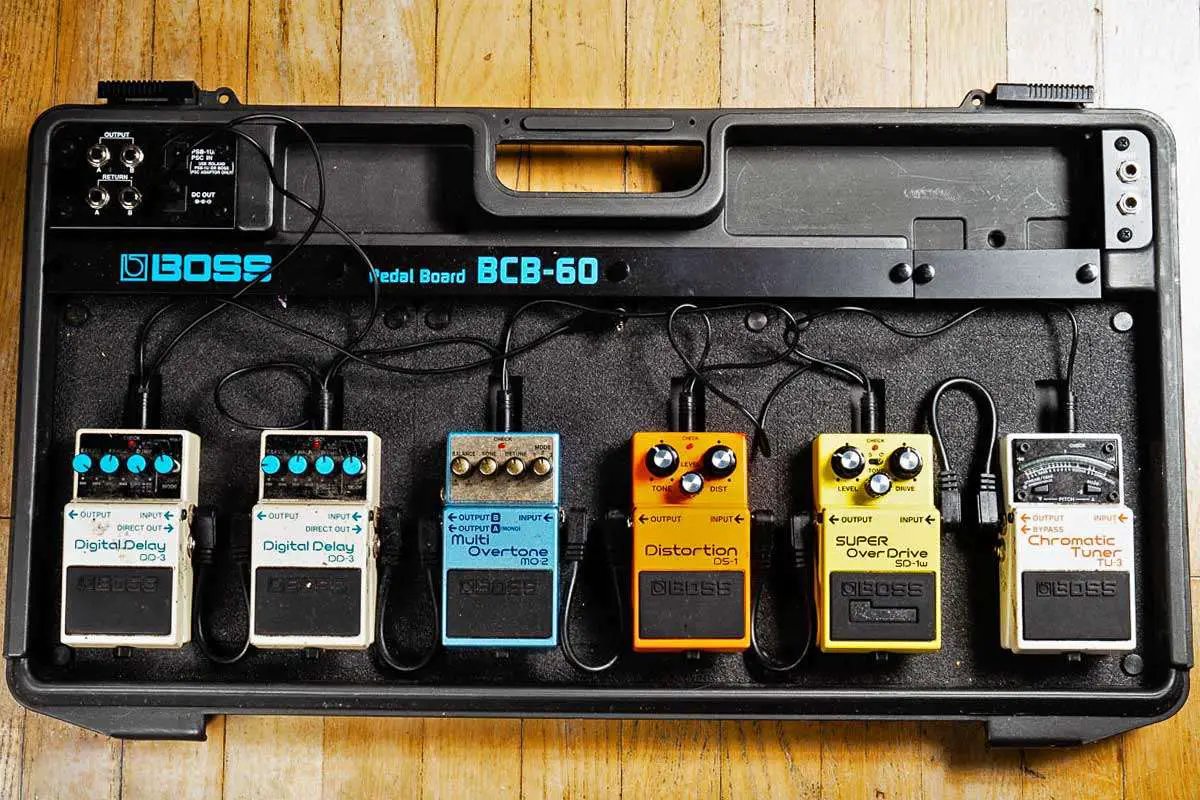
Signature Sounds of Jazz Greats
Mike Stern’s signal chain is recognizable for its simplicity and musicality. A staple in his setup has been a chorus pedal, which adds a shimmering dimension to his articulate playing. The Yamaha Magicstomp pedal became part of his signature sound, offering lush modulation effects.
Wes Montgomery is known for his dynamic and warm tone that was often achieved through his guitar’s controls and techniques, such as his thumb picking. Although Wes was from an era prior to the widespread use of pedals, his tone can be emulated with a tube amplifier and a touch of reverb to provide that smooth, rich sound.
Pat Metheny’s ethereal soundscape often includes the use of a delay pedal to layer his unique improvisations. He achieves his spacious tones through the use of pedals like the Electro-Harmonix Deluxe Memory Man for its rich, analog delay.
With John Scofield, your setup isn’t complete without an overdrive pedal to capture his gritty and expressive sound. The Ibanez Tube Screamer is a popular choice among guitarists seeking to replicate Scofield’s blues-infused jazz tone.
How to Emulate Iconic Jazz Tones
To sound like your jazz heroes, start with understanding their equipment and settings:
- For a Mike Stern-like tone, look into chorus pedals and consider his settings, usually with a slow rate and moderate depth.
- To get closer to Wes Montgomery’s sound, use clean settings on your amp, roll off your guitar tone knob, and employ a subtle reverb.
- Pat Metheny’s sonic landscape requires a good analog delay pedal; adjust the feedback for airy textures and set the mix not to overwhelm your dry signal.
- Emulating John Scofield’s tone involves an overdrive pedal; start with low gain settings and gradually increase for that crunchy bite.
- Jimi Hendrix isn’t typically categorized as a jazz guitarist, but his innovative use of effects has influenced many, including jazz players seeking a more experimental sound. A fuzz pedal combined with a wah pedal could create expressive textures akin to Hendrix’s legendary style, though used differently in a jazz context.
Remember, it’s not just about the pedals—it’s how you use them. Your touch, your guitar, and your amp all play crucial roles in achieving the desired sound.
Tips and Resources
To master jazz guitar, it’s important to blend foundational knowledge with insights from seasoned players. Access to the right resources enhances your educational journey, revealing techniques that shape your musical expression.
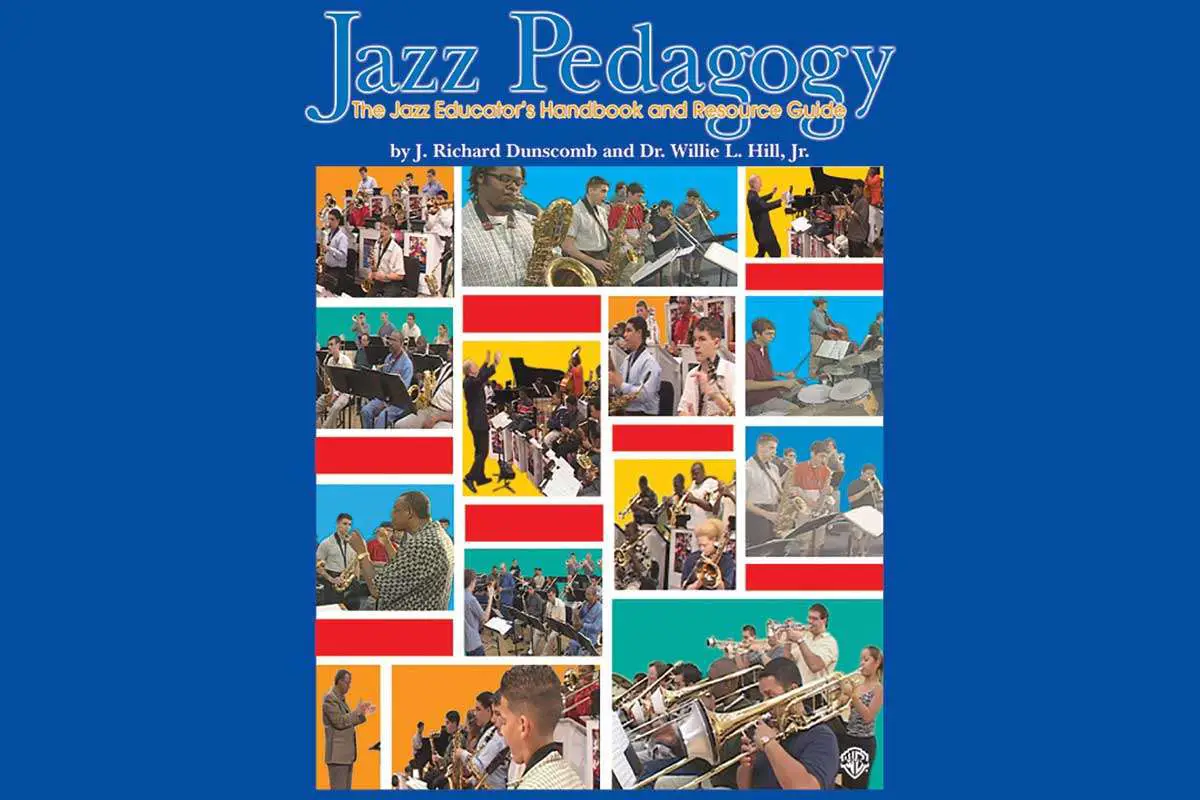
Learning from the Masters
When diving into jazz guitar, start by studying the techniques of legendary musicians. Listen to their distinct sounds and recognize the effects they use. For instance, studying the improvisational approach of Wes Montgomery could lead you to explore the use of the thumb picking technique, which contributes to a softer sound in contrast to using a traditional pick.
Useful Resources for Jazz Guitarists
Books and Guides:
- “Jazz Pedagogy: The Jazz Educator’s Handbook and Resource Guide” provides a comprehensive view on constructing a jazz program, which can translate directly into building your skills. Available on Amazon Here
- “Guitar Amps & Effects for Dummies” will give you an understanding of how to use effects pedals, including those frequently used in jazz like reverb and compressor pedals.
Online Forums and Communities:
Dedicate time to engage with online jazz guitarist communities. These platforms are valuable for obtaining feedback on your playing, discussing gear, and sharing knowledge about effects settings suitable for jazz tones.
Conclusion
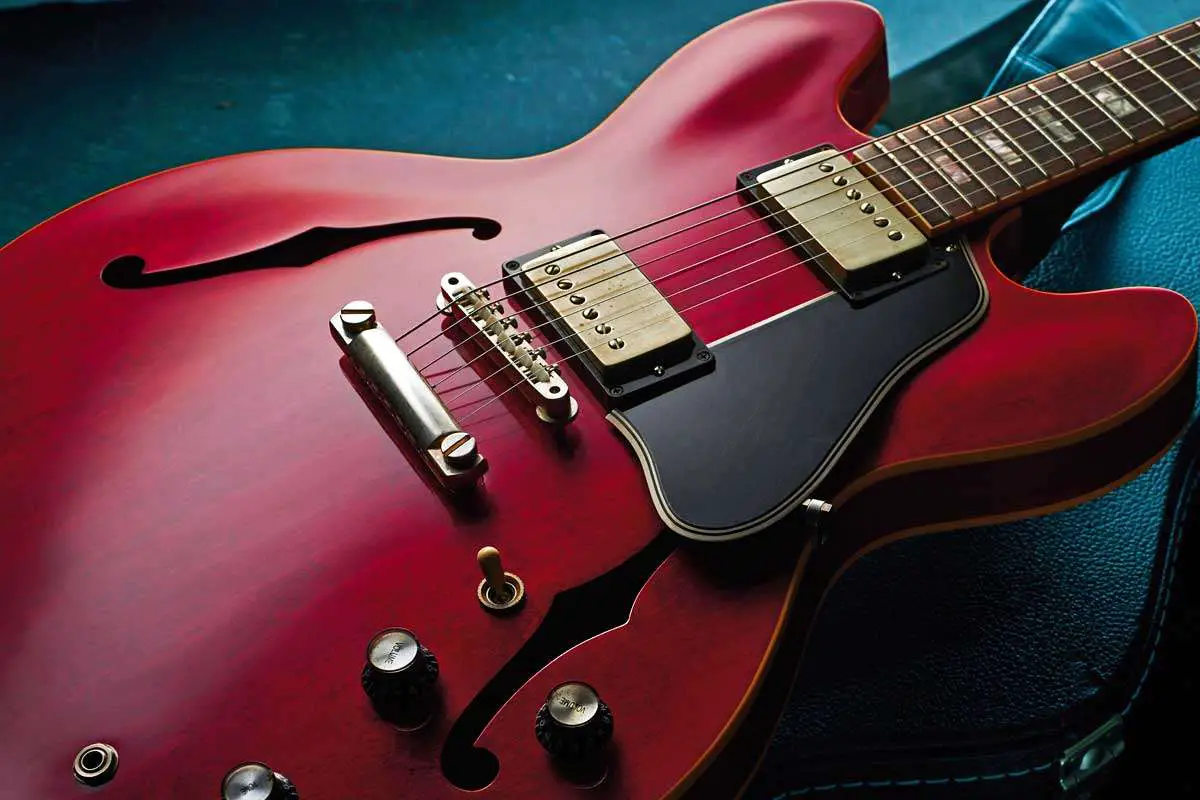
In the realm of jazz, the tonal experience is paramount, and guitar pedals play an integral role in shaping your sound. The choice of pedals can significantly influence the richness and nuances of your playing. Utilizing effects such as reverb and delay allows for an expansive soundscape, essential in solo jazz guitar performances.
- Reverb: Adds depth to your playing, creating the illusion of performing in a larger space.
- Delay: Can multiply your single-note lines, offering a thicker texture.
- Octave Pedals: Expand your guitar’s range, granting a fuller harmonic spectrum.
While experimenting with various pedals, remember that subtlety is often the key. A light touch with modulation effects such as chorus or phaser can add a layer of sophistication without overwhelming the natural sound of your guitar.
Consider your playing style and the classic hallmarks of jazz tone when selecting pedals. Your goal is to complement your guitar’s voice, not overshadow it. Effects should enhance the clarity of your notes and the overall expressiveness of your performance.
Prioritize dynamic response in your pedal choices. The responsiveness to your touch and picking dynamics will allow for greater musical expression, helping you to connect more deeply with your audience.
By thoughtfully integrating pedals into your setup, you elevate not only the richness of your tone but also the creative potential of your jazz guitar playing.
Guitar Pedal Combos For Other Genres
When exploring guitar pedal combinations for various music genres, it’s essential to consider the specific effects that best complement each genre’s sound. Here’s a few more music styles to look into:
Pedals of Blues – Pedals for Country – Pedals for Funk – Pedals for Jazz – Pedals for Metal
